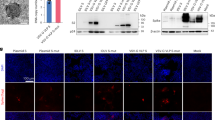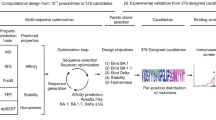Abstract
Lentiviral vectors are being developed to satisfy a wide range of currently unmet medical needs. Vectors destined for clinical evaluation have been rendered multiply defective by deletion of all viral coding sequences and nonessential cis-acting sequences from the transfer genome. The viral envelope and accessory proteins are excluded from the production system. The vectors are produced from separate expression plasmids that are designed to minimize the potential for homologous recombination. These features ensure that the regeneration of the starting virus is impossible. It is a regulatory requirement to confirm the absence of any replication competent virus, so we describe here the development and validation of a replication competent lentivirus (RCL) assay for equine infectious anaemia virus (EIAV)-based vectors. The assay is based on the guidelines developed for testing retroviral vectors, and uses the F-PERT (fluorescent-product enhanced reverse transcriptase) assay to test for the presence of a transmissible reverse transcriptase. We have empirically modelled the replication kinetics of an EIAV-like entity in human cells and devised an amplification protocol by comparison with a replication competent MLV. The RCL assay has been validated at the 20 litre manufacturing scale, during which no RCL was detected. The assay is theoretically applicable to any lentiviral vector and pseudotype combination.
This is a preview of subscription content, access via your institution
Access options
Subscribe to this journal
Receive 12 print issues and online access
$259.00 per year
only $21.58 per issue
Buy this article
- Purchase on Springer Link
- Instant access to full article PDF
Prices may be subject to local taxes which are calculated during checkout




Similar content being viewed by others
References
Saenz DT, Poeschla EM . FIV: from lentivirus to lentivector. J Gene Med 2004; 6: S95–S104.
Mitrophanous K, Yoon S, Rohll J, Patil D, Wilkes F, Kim V et al. Stable gene transfer to the nervous system using a non-primate lentiviral vector. Gene Therapy 1999; 6: 1808–1818.
Naldini L, Blomer U, Gage FH, Trono D, Verma IM . Efficient transfer, integration, and sustained long-term expression of the transgene in adult rat brains injected with a lentiviral vector. Proc Natl Acad Sci USA 1996; 93: 11382–11388.
Azzouz M, Martin-Rendon E, Barber RD, Mitrophanous KA, Carter EE, Rohll JB et al. Multicistronic lentiviral vector-mediated striatal gene transfer of aromatic L-amino acid decarboxylase, tyrosine hydroxylase, and GTP cyclohydrolase I induces sustained transgene expression, dopamine production, and functional improvement in a rat model of Parkinson's disease. J Neurosci 2002; 22: 10302–10312.
Azzouz M, Ralph S, Wong LF, Day D, Askham Z, Barber RD et al. Neuroprotection in a rat Parkinson model by GDNF gene therapy using EIAV vector. Neuroreport 2004; 15: 985–990.
Azzouz M, Ralph GS, Storkebaum E, Walmsley LE, Mitrophanous KA, Kingsman SM et al. VEGF delivery with retrogradely transported lentivector prolongs survival in a mouse ALS model. Nature 2004; 429: 413–417.
Wong L-F, Yip P, Battaglia A, Grist J, Corcoran J, Maden M et al. The transcription factor retinoic acid receptor b2 promotes functional regeneration of sensory axons into the adult rat spinal cord. Nat Neurosci 2005, (submitted).
Donahue RE, Kessler SW, Bodine D, McDonagh K, Dunbar C, Goodman S et al. Helper virus induced T cell lymphoma in nonhuman primates after retroviral mediated gene transfer. J Exp Med 1992; 176: 1125–1135.
Chen J, Reeves L, Cornetta K . Safety testing for replication-competent retrovirus associated with gibbon ape leukemia virus-pseudotyped retroviral vectors. Hum Gene Ther 2001; 12: 61–70.
Cosset FL, Takeuchi Y, Battini JL, Weiss RA, Collins MK . High-titer packaging cells producing recombinant retroviruses resistant to human serum. J Virol 1995; 69: 7430–7436.
Emi N, Friedmann T, Yee JK . Pseudotype formation of murine leukemia virus with the G protein of vesicular stomatitis virus. J Virol 1991; 65: 1202–1207.
Yee JK, Friedmann T, Burns JC . Generation of high-titer pseudotyped retroviral vectors with very broad host range. Methods Cell Biol 1994; 43 (Part A): 99–112.
Mazarakis ND, Azzouz M, Rohll JB, Ellard FM, Wilkes FJ, Olsen AL et al. Rabies virus glycoprotein pseudotyping of lentiviral vectors enables retrograde axonal transport and access to the nervous system after peripheral delivery. Hum Mol Genet 2001; 10: 2109–2121.
Kang Y, Stein CS, Heth JA, Sinn PL, Penisten AK, Staber PD et al. In vivo gene transfer using a nonprimate lentiviral vector pseudotyped with Ross River Virus glycoproteins. J Virol 2002; 76: 9378–9388.
Medina MF, Kobinger GP, Rux J, Gasmi M, Looney DJ, Bates P et al. Lentiviral vectors pseudotyped with minimal filovirus envelopes increased gene transfer in murine lung. Mol Ther 2003; 8: 777–789.
Soneoka Y, Cannon PM, Ramsdale EE, Griffiths JC, Romano G, Kingsman SM et al. A transient three-plasmid expression system for the production of high titer retroviral vectors. Nucleic Acids Res 1995; 23: 628–633.
Kim VN, Mitrophanous K, Kingsman SM, Kingsman AJ . Minimal requirement for a lentivirus vector based on human immunodeficiency virus type 1. J Virol 1998; 72: 811–816.
Kotsopoulou E, Kim VN, Kingsman AJ, Kingsman SM, Mitrophanous KA . A Rev-independent human immunodeficiency virus type 1 (HIV-1)-based vector that exploits a codon-optimized HIV-1 gag-pol gene. J Virol 2000; 74: 4839–4852.
Wagner R, Graf M, Bieler K, Wolf H, Grunwald T, Foley P et al. Rev-independent expression of synthetic gag-pol genes of human immunodeficiency virus type 1 and simian immunodeficiency virus: implications for the safety of lentiviral vectors [in process citation]. Hum Gene Ther 2000; 11: 2403–2413.
Rohll JB, Mitrophanous KA, Martin-Rendon E, Ellard FM, Radcliffe PA, Mazarakis ND et al. Design, production, safety, evaluation, and clinical applications of nonprimate lentiviral vectors. Methods Enzymol 2002; 346: 466–500.
Wilkes FJ . 2005 (in preparation).
Arnold BA, Hepler RW, Keller PM . One-step fluorescent probe product-enhanced reverse transcriptase assay. Biotechniques 1998; 25: 98–106.
Lovatt A, Black J, Galbraith D, Doherty I, Moran MW, Shepherd AJ et al. High throughput detection of retrovirus-associated reverse transcriptase using an improved fluorescent product enhanced reverse transcriptase assay and its comparison to conventional detection methods. J Virol Methods 1999; 82: 185–200.
Bieniasz PD, Grdina TA, Bogerd HP, Cullen BR . Highly divergent lentiviral Tat proteins activate viral gene expression by a common mechanism. Mol Cell Biol 1999; 19: 4592–4599.
EMEA. Guideline on Development and Manufacture of Lentiviral Vectors, European Medicines Agency, Evaluation of Medicines for Human Use, Committee for medicinal products for human use (CHMP) 2005, CHMP/BWP/2458/03, pp 1–8.
Zhang B, Jin S, Jin J, Li F, Montelaro RC . A tumor necrosis factor receptor family protein serves as a cellular receptor for the macrophage-tropic equine lentivirus. PNAS 2005; 102: 9918–9923.
Printz M, Reynolds J, Mento SJ, Jolly D, Kowal K, Sajjadi N . Recombinant retroviral vector interferes with the detection of amphotropic replication competent retrovirus in standard culture assays. Gene Therapy 1995; 2: 143–150.
CBER, Services USDoHaH, Administration FaD, (CBER) CfBEaR. Guidance for industry: supplemental guidance on testing for replication competent retrovirus in retroviral vector based gene therapy products and during follow-up of patients in clinical trials using retroviral vectors. CBER document 2000; 1-12.
Sastry L, Xu Y, Johnson T, Desai K, Rissing D, Marsh J et al. Certification assays for HIV-1-based vectors: frequent passage of gag sequences without evidence of replication-competent viruses. Mol Ther 2003; 8: 830–839.
Farson D, Witt R, McGuinness R, Dull T, Kelly M, Song J et al. A new-generation stable inducible packaging cell line for lentiviral vectors. Hum Gene Ther 2001; 12: 981–997.
Escarpe P, Zayek N, Chin P, Borellini F, Zufferey R, Veres G et al. Development of a sensitive assay for detection of replication-competent recombinant lentivirus in large-scale HIV-based vector preparations. Mol Ther 2003; 8: 332–341.
Segall HI, Yoo E, Sutton RE . Characterization and detection of artificial replication-competent lentivirus of altered host range. Mol Ther 2003; 8: 118–129.
Zufferey R, Donello JE, Trono D, Hope TJ . Woodchuck hepatitis virus posttranscriptional regulatory element enhances expression of transgenes delivered by retroviral vectors. J Virol 1999; 73: 2886–2892.
Acknowledgements
We would like to thank BioReliance Ltd for helpful discussions during the scale-up and validation of the RCL assay.
Author information
Authors and Affiliations
Corresponding author
Additional information
Supplemenatry information accompanies the paper on Gene Therapy website (http://www.nature.com/gt)
Supplementary information
Rights and permissions
About this article
Cite this article
Miskin, J., Chipchase, D., Rohll, J. et al. A replication competent lentivirus (RCL) assay for equine infectious anaemia virus (EIAV)-based lentiviral vectors. Gene Ther 13, 196–205 (2006). https://doi.org/10.1038/sj.gt.3302666
Received:
Revised:
Accepted:
Published:
Issue Date:
DOI: https://doi.org/10.1038/sj.gt.3302666
Keywords
This article is cited by
-
Production of lentiviral vectors
Molecular Therapy - Methods & Clinical Development (2016)
-
Development of a replication-competent lentivirus assay for dendritic cell-targeting lentiviral vectors
Molecular Therapy - Methods & Clinical Development (2015)
-
Replication-competent Lentivirus Analysis of Clinical Grade Vector Products
Molecular Therapy (2011)
-
Development of inducible EIAV-based lentiviral vector packaging and producer cell lines
Gene Therapy (2009)



